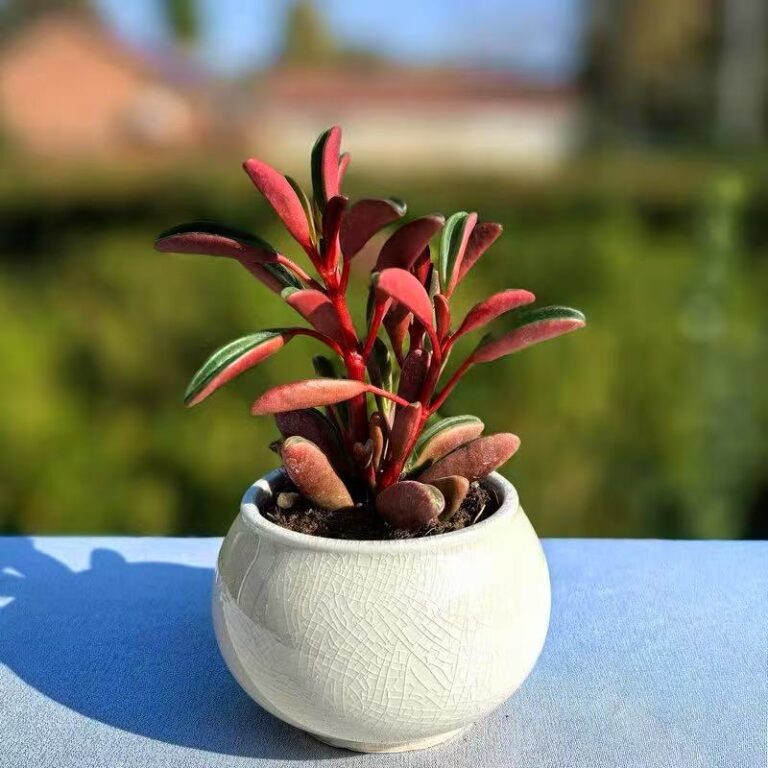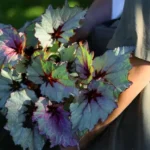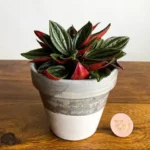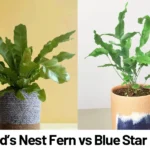Meet Peperomia graveolens: A Unique Succulent for Indoor Enthusiasts
Peperomia graveolens, often called Ruby Glow, is a charming and compact succulent that offers a distinctive touch to any indoor plant collection. Belonging to the Piperaceae family, this Ecuadorian native is popular not just for its manageable size but also for its eye-catching foliage, which features deep green on the top side and rich ruby red on the underside. It’s a low-maintenance plant, well-suited for those new to indoor gardening, yet attractive enough to delight seasoned plant lovers.
Understanding the Characteristics of Peperomia graveolens
Peperomia graveolens is a relatively small plant, typically growing to about 10–20 cm in height. This makes it an excellent fit for desks, windowsills, and compact spaces. What sets this plant apart is the appearance of its leaves. The thick, fleshy leaves are V-shaped in cross-section, allowing light to filter through the top side and create a glowing effect from the bottom—a stunning visual quirk that gives the variety its common name, Ruby Glow.
This plant is also semi-succulent, meaning it retains water in its fleshy leaves and stems. While not a true succulent, it shares many similar care requirements, making it easy to manage in typical indoor conditions.
Ideal Growing Conditions
Successfully growing Peperomia graveolens indoors starts with recreating its natural habitat—humid, warm, and partially shaded. Here are the primary conditions it thrives in:
Light Requirements
Peperomia graveolens prefers bright, indirect light. While it can tolerate some morning sun, too much direct sunlight can scorch its leaves. Conversely, low-light conditions may cause the plant to become leggy and lose its vibrant colors.
- Place it near an east or north-facing window for optimal lighting.
- If using artificial lighting, make sure it’s bright and indirect, such as a full-spectrum LED plant light.
Temperature and Humidity
This tropical plant prefers average room temperatures between 65–75°F (18–24°C). It does not perform well in cold drafts or near heating/cooling vents.
- Avoid temperatures below 55°F (13°C).
- Humidity should be moderate. Although it tolerates normal household humidity, a slight increase is beneficial. Grouping it with other plants or placing it on a pebble tray can help.

Watering and Soil Needs
Watering Tips
Overwatering is one of the most common issues with Peperomia graveolens. As a semi-succulent, it prefers to dry out slightly between waterings.
- Water only when the top inch of soil feels dry to the touch.
- During the growing season (spring and summer), water every 7–10 days as needed.
- Reduce watering frequency during fall and winter months when the plant is dormant.
Always empty the saucer after watering to prevent soggy roots, which can lead to root rot.
Soil Preferences
Good drainage is key. A well-aerated potting mix designed for succulents or cacti works best. You can also create your own mix:
- 2 parts peat moss or coco coir
- 1 part perlite or pumice
- 1 part coarse sand
This combination allows for good moisture retention while preventing waterlogging.
Fertilizing for Healthy Growth
Peperomia graveolens doesn’t require heavy feeding. However, occasional fertilizing can support healthy leaf color and new growth during its active season.
- Use a balanced, water-soluble fertilizer diluted to half strength.
- Apply every 4–6 weeks during spring and summer.
- Refrain from fertilizing in winter, as the plant’s growth slows down significantly.
Organic options like worm castings or seaweed extract can also be applied for a more natural care regimen.
Repotting and Pruning Tips
When and How to Repot
Peperomia graveolens is slow-growing and enjoys being slightly root-bound. Repotting is typically necessary every 2–3 years or when the plant visibly outgrows its current container.
- Choose a pot that’s only 1–2 inches wider than the current one.
- Repot in the spring to minimize transplant shock.
Be gentle when handling the roots, as they are delicate. After repotting, wait a few days before watering to allow the plant to acclimate.
Pruning Practices
Pruning can help maintain a bushy, compact shape and remove any discolored or leggy growth.
- Use clean, sharp scissors or pruning shears.
- Trim back up to one-third of the plant during active growth periods.
Also, pinching out the tips of new growth can encourage branching and a fuller appearance.
Propagation Techniques
Propagating Peperomia graveolens is easy and rewarding. The most common methods are by stem or leaf cuttings.
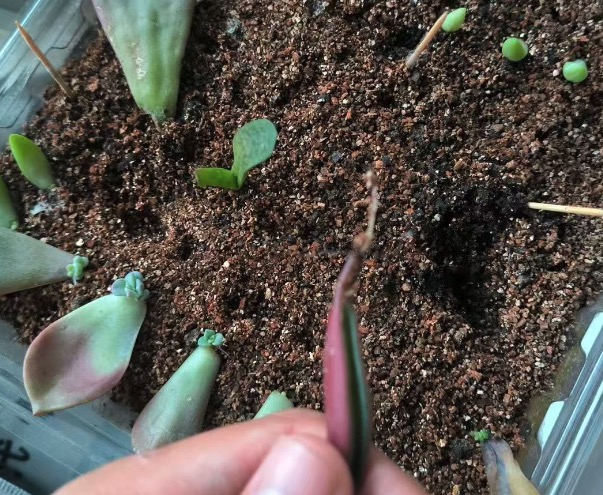
Stem Cutting
- Choose a healthy stem with multiple leaves.
- Cut just below a node using a sterilized tool.
- Allow the cutting to callous for a day.
- Place in well-draining potting mix or water until roots develop (typically 2–4 weeks).
Leaf Cutting
- Cut a single leaf with a short piece of petiole (leaf stem).
- Insert the petiole into moist, well-draining soil.
- Cover with a plastic dome or clear bag to retain humidity, and place in indirect light.
Rooting usually takes a few weeks. Once new leaf growth appears, you can transplant the cutting into its own pot.
Common Problems and How to Prevent Them
Pests
Though generally pest-resistant, Peperomia graveolens may attract:
- Mealybugs: Look for white, cottony spots on leaves and stems.
- Spider mites: Fine webbing on leaf undersides may signal their presence.
- Fungus gnats: Often appear when the soil is kept too moist.
Use neem oil, insecticidal soap, or wipe affected parts with alcohol-dipped cotton swabs to address pest issues. Keep your plant in well-ventilated areas and avoid overwatering to discourage infestations.
Diseases
Root rot is the most prevalent issue, mainly due to overwatering. Leaf spots or mushy stems often indicate fungal or bacterial infections.
Prevent problems by ensuring proper drainage, using sterile potting mix, and spacing plants to allow air circulation.
Conclusion: A Plant Worth the Glow
Peperomia graveolens is a gem among houseplants—low-maintenance, visually striking, and perfect for small spaces. Its semi-succulent nature makes it forgiving for beginners, while its unique appearance satisfies even the most advanced collectors. With proper lighting, minimal watering, and an occasional feeding, this Ruby Glow will shine brightly in your indoor garden for years.
Whether you’re embarking on your first houseplant journey or expanding an existing collection, Peperomia graveolens offers beauty, ease, and a touch of botanical intrigue.
References
- Brickell, C. (2019). RHS A-Z Encyclopedia of Garden Plants (4th ed.). DK Publishing.
- Crozier, A. (2023). Indoor Plant Care: A Guide for Beginners. Green Thumb Press.
- Royal Horticultural Society. (2022). Peperomia graveolens – RHS Gardening. Retrieved from https://www.rhs.org.uk/plants/peperomia-graveolens

